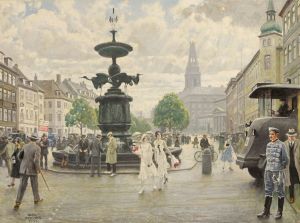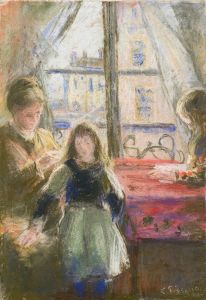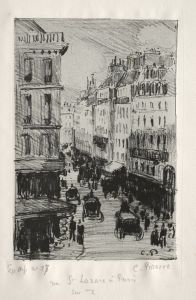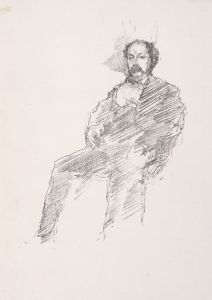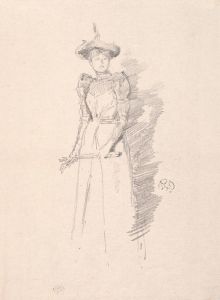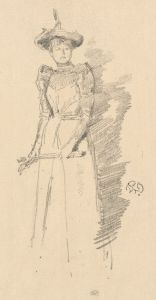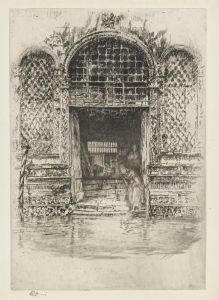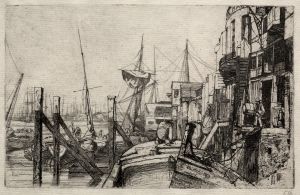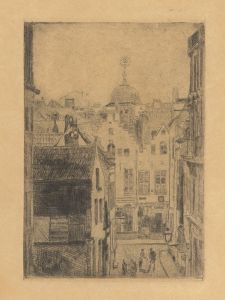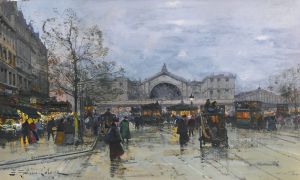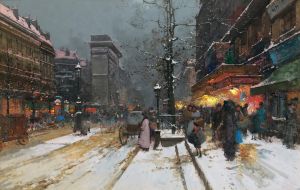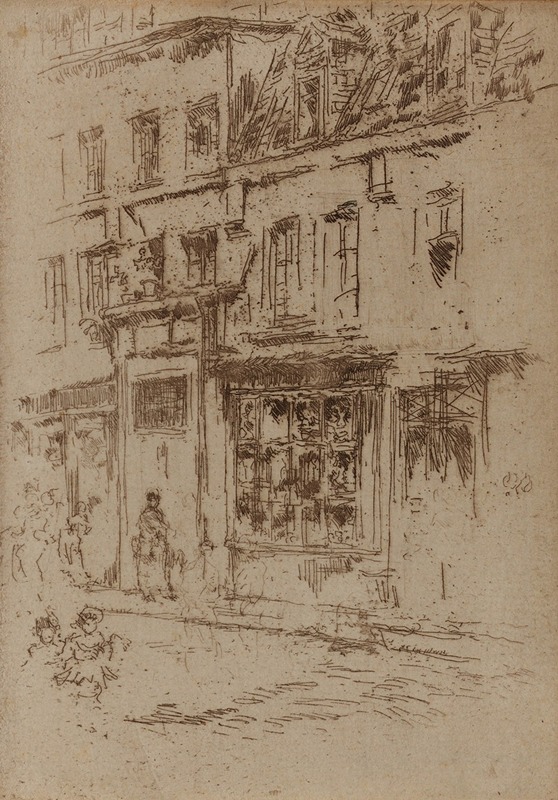
Petite Rue au Beurre, Brussels
A hand-painted replica of James Abbott McNeill Whistler’s masterpiece Petite Rue au Beurre, Brussels, meticulously crafted by professional artists to capture the true essence of the original. Each piece is created with museum-quality canvas and rare mineral pigments, carefully painted by experienced artists with delicate brushstrokes and rich, layered colors to perfectly recreate the texture of the original artwork. Unlike machine-printed reproductions, this hand-painted version brings the painting to life, infused with the artist’s emotions and skill in every stroke. Whether for personal collection or home decoration, it instantly elevates the artistic atmosphere of any space.
James Abbott McNeill Whistler was an American artist known for his significant contributions to the art world during the late 19th century. He was a leading figure in the Aesthetic Movement, which emphasized the visual and sensual qualities of art and design over narrative or moral themes. Whistler is best known for his paintings, etchings, and lithographs, and he played a crucial role in the development of modern art.
One of Whistler's works, "Petite Rue au Beurre, Brussels," is an etching rather than a painting. This piece is part of Whistler's extensive body of work in printmaking, where he demonstrated his mastery of the etching technique. Whistler's etchings are celebrated for their delicate lines, atmospheric effects, and the artist's ability to capture the essence of a scene with minimal detail.
"Petite Rue au Beurre, Brussels" was created during Whistler's travels in Europe. The etching depicts a street scene in Brussels, capturing the architectural details and the bustling life of the city. Whistler's choice of subject reflects his interest in urban landscapes and his ability to find beauty in everyday scenes. The Rue au Beurre is a historic street in Brussels, known for its traditional architecture and vibrant atmosphere, making it an ideal subject for Whistler's artistic exploration.
Whistler's etchings often focused on the interplay of light and shadow, and "Petite Rue au Beurre, Brussels" is no exception. The etching showcases his skill in rendering the textures of the buildings and the cobblestone street, as well as his ability to convey a sense of depth and perspective. Whistler's use of line is both precise and expressive, allowing him to create a vivid impression of the scene with a few carefully placed strokes.
The etching is part of Whistler's "Brussels Set," a series of works that he produced during his time in the city. This series is notable for its exploration of urban environments and its reflection of Whistler's interest in capturing the character and atmosphere of different locales. Whistler's work in Brussels, including "Petite Rue au Beurre," demonstrates his ability to adapt his style to different settings and to convey the unique qualities of each place he visited.
Whistler's etchings, including "Petite Rue au Beurre, Brussels," were highly regarded during his lifetime and continue to be appreciated for their technical skill and artistic vision. His work in printmaking contributed to the revival of etching as a significant art form in the 19th century, influencing subsequent generations of artists.
Overall, "Petite Rue au Beurre, Brussels" exemplifies Whistler's talent for capturing the essence of a scene through his mastery of etching. The work reflects his interest in urban landscapes and his ability to convey the beauty of everyday life through his art. Whistler's contributions to the art world, particularly in the realm of printmaking, remain influential and continue to be celebrated by art enthusiasts and scholars alike.





